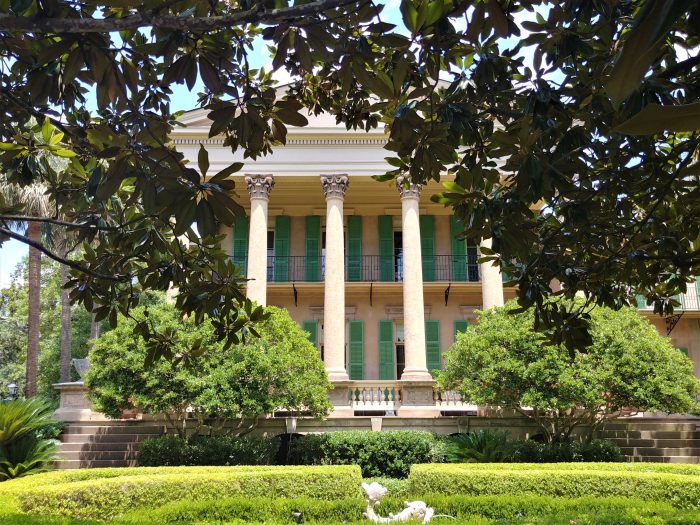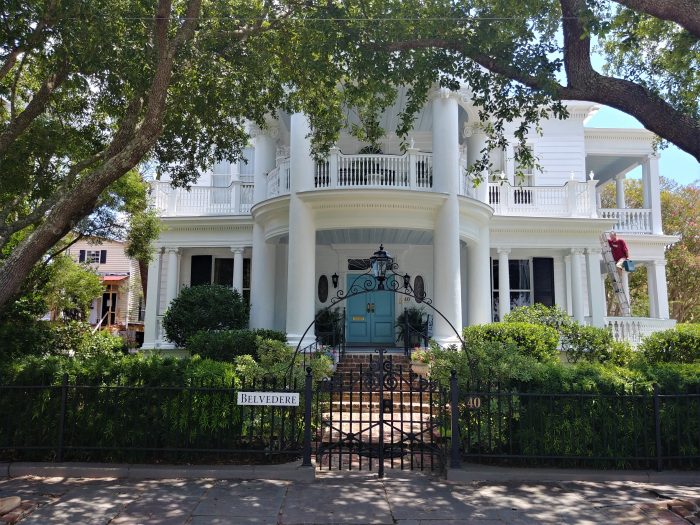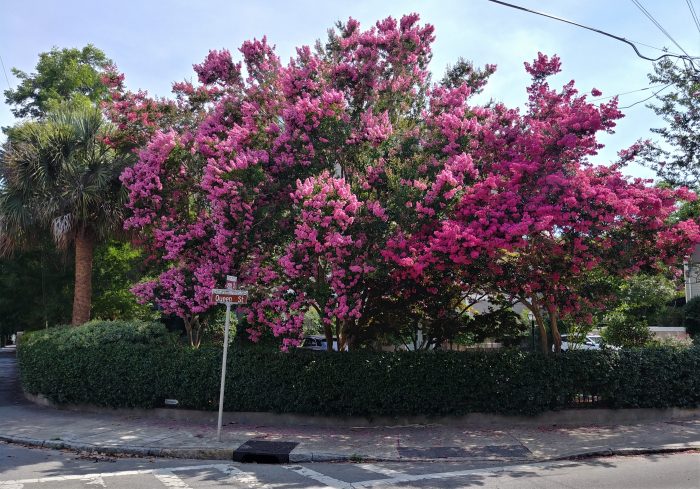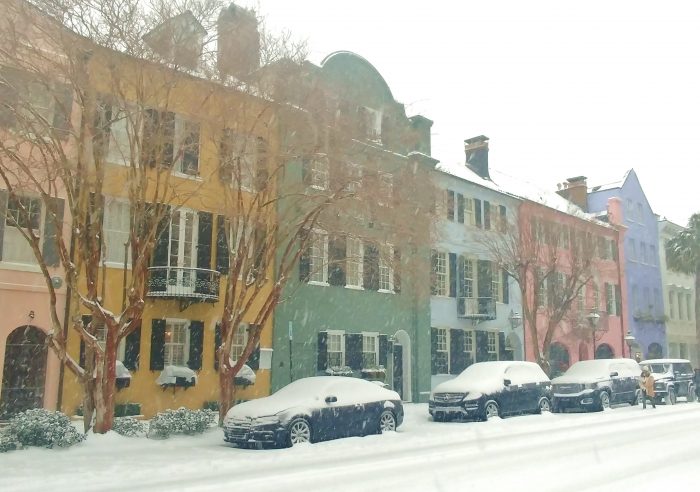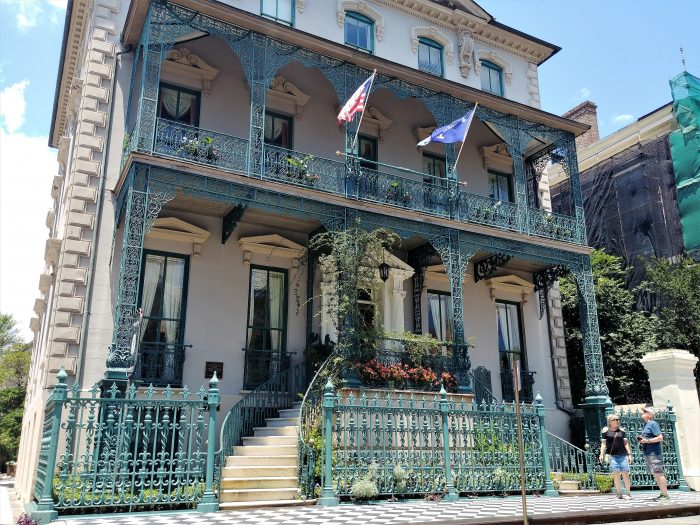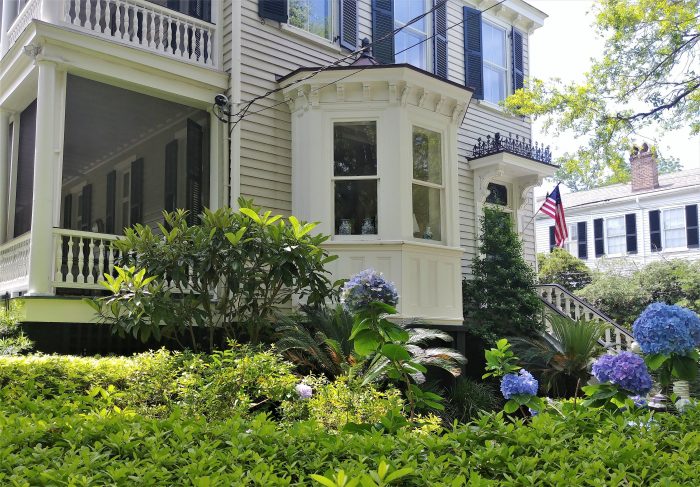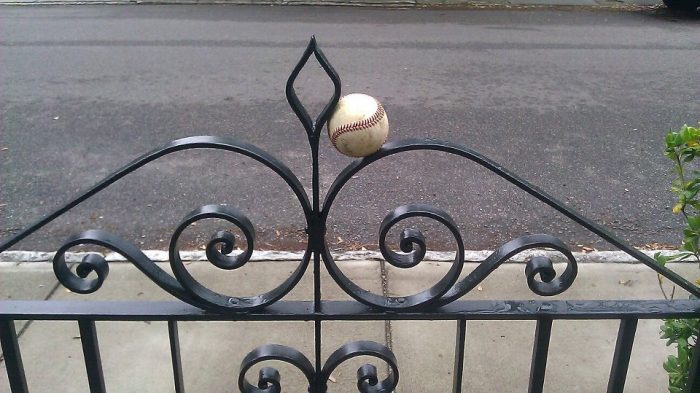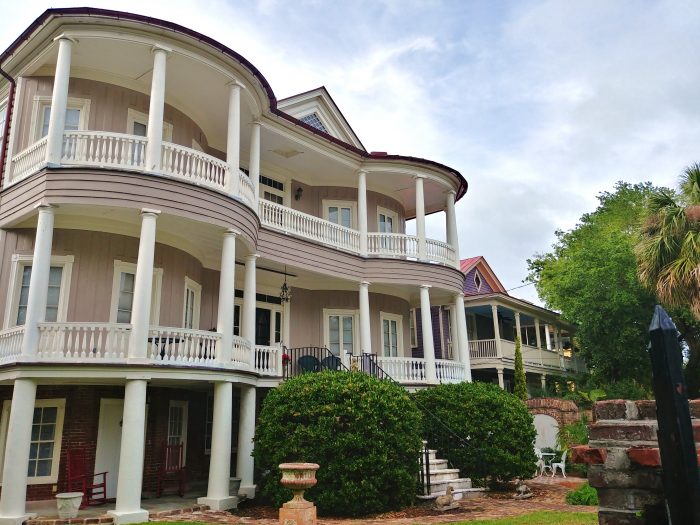The beautiful antebellum Isaac Jenkins Mikell House (circa 1853) is well known for a variety of reasons (including that it was the public library for many years and more recently has been on the TV show Southern Charm). Its Corinthian columns capitals are carved from cypress wood and are ornamented with rams heads. No bull.
The Belvedere
The beautiful Belvedere (aka the Albert W. Todd House, circa 1900) fronts Colonial Lake at the corner of Rutledge Avenue and Queen Street. It’s named for the demolished Cooper River plantation house where much of wood and interior details (cornices, wainscoting, mantels) were salvaged. And to make it even better — you can sleep there, as it is now a B&B.
The Longest Running Show in Charleston
The crepe myrtle tree is the longest blooming plant in Charleston. That a lot of “wow.”
A Break in the Weather
With the oppressive heat now in Charleston, a cooler weather photo seems in order. It’s not often you get to see Rainbow Row in the middle of a heavy snowstorm. Ahhhhh….
Home on Broad
This house dates back to 1763 and was the home of John Rutledge, who was clearly an underachiever. Not only was he a signer of the US Constitution, he was the first Governor of South Carolina, and both and Associate and Chief Justice of the United States Supreme Court (among other things). The cool thing is that you too can sleep there, as it is now an inn and has one of the most recognizable sidewalks in Charleston.
Neighbors
This beautiful Charleston front yard, highlighted by some huge hydrangea blossoms, is on Logan Street. Across the street is the graveyard of a church dating back to 1834. The church itself was substantially destroyed in the fire of 1861 and is no longer there.
Happy Father’s Day!
This Glimpse contains one of my favorite father/son memories — the baseball lodging in our gate while tossing with my son when he was young. Besides being able to catch baseballs, a very cool thing about the gate is that it was designed for us by Philip Simmons, the famed Charleston blacksmith. Even cooler, the gate was built on The National Mall in Washington, DC in 2001 at the Smithsonian Institutions’ American Folklife Festival. Even cooler, each decorative scroll was wrought by a different student of the School of the Building Arts (now the American College of the Building Arts). And to make it that much more cool, the ornament on top of the gate was added by Mr. Simmons at the very end, because he “wanted my wife to have a diamond.”
While it may be a modest gate, its story is as good as any in Charleston!
One Big Step For Man…
This extremely handsome, barely post-colonial house (the David Saylor House, circa 1778) can be found on Elliott Street. But watch that first step, it’s a doozy.
The Blues
This wonderful Charleston garden is located one the side of the very first house built on Murray Boulevard. The ceiling of the porch is painted in “Haint Blue.” The Gullah-Geechee communities, found in coastal South Carolina and Georgia, believed that the blue would keep the spirits of the dead (the haints) from entering the house. Now common in Charleston and across the South, it may or may not work on the spirits, but it sure does make for a pretty porch.
We’re Number 1!
This unusually double-bowed porch fronts a beautiful house on Chapel Street (built circa 1840). The house holds the distinction for having the first documented use of linoleum in Charleston — which was used as the stair hall floor coverings. The builder had to order from England. Talking about being fashion forward!
- « Previous Page
- 1
- …
- 96
- 97
- 98
- 99
- 100
- …
- 188
- Next Page »
